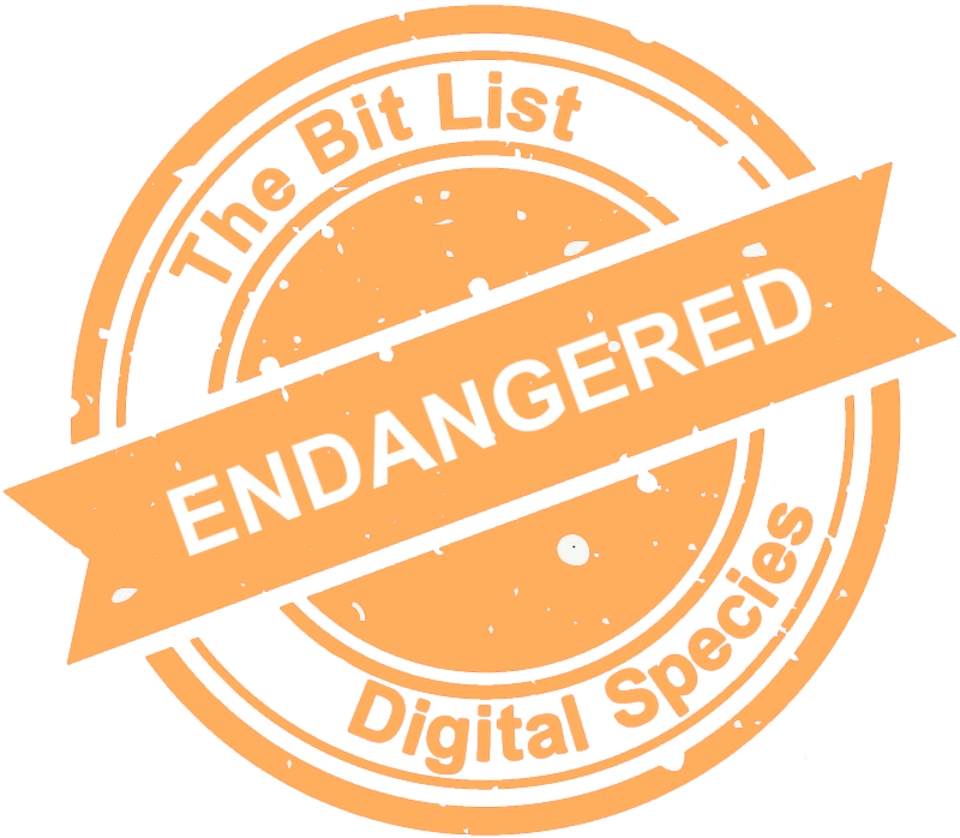Research Materials and Outputs in Museums and Galleries
 |
||
|
Digital material used in, or resulting from, research carried out on materials, digital or otherwise, held in galleries, museums, or similar. Research outcomes may not be formally published, and supporting datasets may not be formally accessioned or archived by an organization or a related organization. Access to these research materials and outcomes may only be made available for internal use, to inform other public outcomes, or for individual researchers. |
||
|
Digital Species: Museum and Gallery, Research Outputs |
Trend in 2024:
|
Consensus Decision |
|
Added to List: 2023 |
New Rescoped Entry |
|
|
Imminence of Action Action is recommended within three years, detailed assessment within one year. |
Significance of Loss The loss of tools, data or services within this group would impact on people and sectors around the world. |
Effort to Preserve Loss seems likely: by the time tools or techniques have been developed the material will likely have been lost. |
|
Examples Unpublished or published research papers, datasets, databases and other supplementary materials. |
||
|
‘Critically Endangered’ in the Presence of Aggravating Conditions Lack of documentation; uncertainty over IPR or the presence of orphaned works; unstable funding for repository; external dependencies. |
||
|
‘Vulnerable’ in the Presence of Good Practice Strong data management planning; preservation capability; good documentation; deposit into trusted repository. |
||
|
2023 Review This entry was added in 2019 under ‘Digital Materials in Museums and Galleries’ and previously rescoped in 2021 to ‘Supporting Digital Materials for Museums and Galleries’. The 2023 Bit List Council superseded the entry, splitting it into six discrete entries as the scope of the single entry was too broad to provide the guidance needed. The recommendation to break this entry down was also made by the 2021 Jury, as the types of digital collections content in museums can be vast and offer particular risks in museum and gallery contexts. This entry on Research Materials and Outputs within the scope of Museums and Galleries differs from the ones found in Research Outputs, with the latter focus around institutional supporting higher education institutions but lacking for museums and gallery contexts. They agreed with the 2021 Jury Review recommendations that Museum & Gallery entries require further rescoping. In regards to this entry, the 2023 Council recommended that a future review should further rescope of Oral Histories and Research Materials and Outputs due to overlaps/cross referencing which, due to time constraints, was unable to be done for the 2023 review cycle. |
||
|
2024 Interim Review These risks remain on the same basis as before, with no significant trend towards even greater or reduced risk (‘No change’ to trend). While there are no changes to the risk trend, they note an influencing factor over the past year is the potential shift in funder requirements around Open Access, and sometimes preservation. With that in mind, they recommend a full international review in 2025 to see globally where funder requirements are placed for both preservation and (long-term) Open Access |
||
|
Additional Comments To add further clarity, it might be worth differentiating use cases—for research outputs as digital material resulting from research carried out in Museums and Galleries, and for digital material used in research. This research may be publicly or philanthropically funded. While research materials - used and/or developed in the course or research - and research outputs may not be made publicly available, they may be used to inform other outputs, e.g. exhibition, interpretation, conservation, etc. Exhibition catalogues and interpretation of collections are often published online in research papers. |
||





































































































































